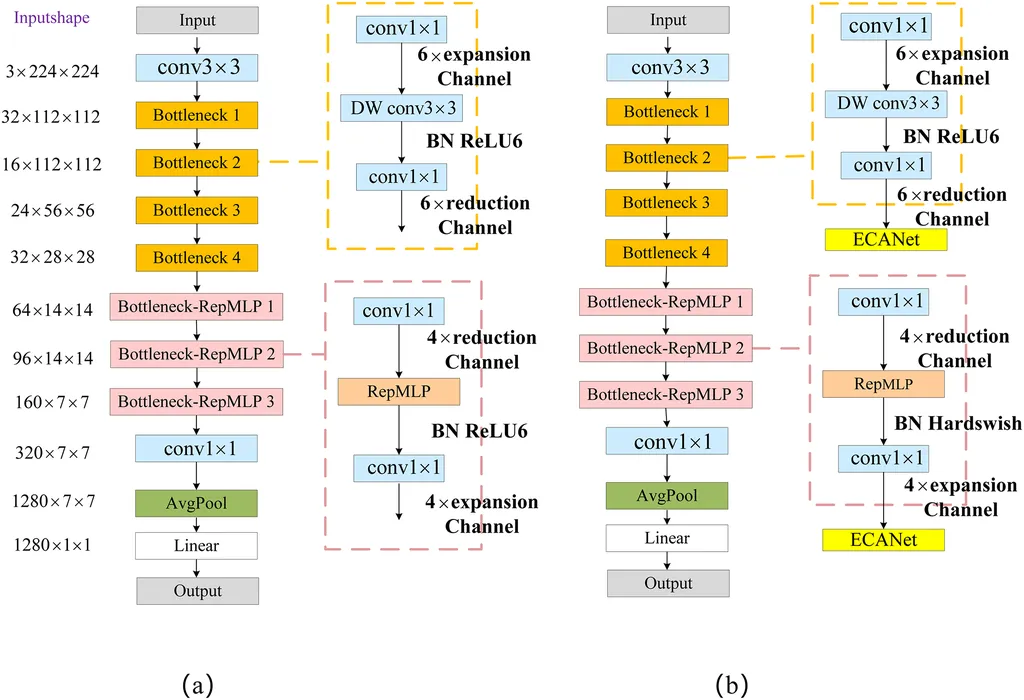In the rapidly evolving landscape of intelligent agriculture, the need for swift and precise disease detection in crops has never been more critical. A recent study published in *Frontiers in Plant Science* (translated to English as *Frontiers in Plant Science*) introduces a groundbreaking model that could revolutionize how we approach rice disease classification. Led by Yongqi Xu, the research presents LiSA-MobileNetV2, a lightweight deep learning model designed to enhance the accuracy and efficiency of disease recognition in rice crops.
The study addresses a significant challenge in the field: while lightweight convolutional neural networks (CNNs) are favored for their computational efficiency, they often fall short in feature representation and classification accuracy. “We aimed to create a model that not only simplifies the network architecture but also improves feature learning and attention mechanisms,” explains Yongqi Xu. The results speak for themselves. LiSA-MobileNetV2 achieves a test accuracy of 95.68%, a remarkable improvement over the original MobileNetV2’s 89.91%.
The model’s success is attributed to three key innovations. First, the restructuring of the inverted residual module simplifies the network architecture, boosting accuracy by 2.41%. Second, the integration of the Swish activation function enhances the model’s non-linear feature learning, pushing accuracy to 94.04%. Finally, the addition of a squeeze-and-excitation attention mechanism further refines the model, achieving the final accuracy of 95.68%. Importantly, these improvements come with a reduction in parameter size and FLOPs by 74.69% and 48.18%, respectively, ensuring strong computational efficiency.
The implications of this research are profound for the agricultural sector. Accurate and rapid disease detection is crucial for ensuring food security and improving crop yield. “Our model provides a high-accuracy, resource-efficient solution for real-time rice disease detection,” says Yongqi Xu. This could translate into significant commercial impacts, particularly in regions where rice is a staple crop. Farmers and agricultural businesses can leverage this technology to monitor crop health more effectively, reducing losses and increasing productivity.
The study’s findings also pave the way for future developments in the field of intelligent agriculture. By demonstrating the effectiveness of combining structural simplification, advanced activation functions, and efficient attention mechanisms, the research sets a new standard for CNN performance. As the agricultural sector continues to embrace smart farming systems, models like LiSA-MobileNetV2 could become integral tools in the fight against crop diseases.
In summary, the research led by Yongqi Xu offers a promising solution to the challenges of rice disease classification. With its high accuracy and computational efficiency, LiSA-MobileNetV2 stands as a testament to the power of innovative deep learning models in transforming agricultural practices. As published in *Frontiers in Plant Science*, this study not only advances our understanding of plant disease recognition but also opens new avenues for the future of smart farming.

